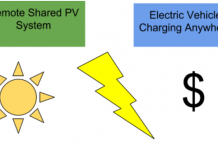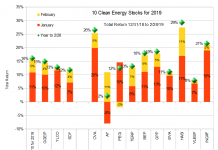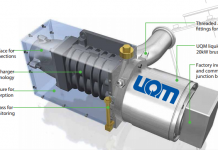A couple of weeks ago, we received an inquiry from a reader asking us to look into potential beneficiaries of the American Recovery and Reinvestment Act (ARRA)’s high-speed rail (HSR) provisions. This sounded like something our readers would want to read about so I decided to do it.
In a nutshell, here are the two main component’s of ARRA’s HSR approach:
- $8 billion for for HSR corridors and other intercity passenger rail service (unclear at this point how much will go into each, although the companies discussed below can benefit from both)
- The rules around state issuance of private activity bonds for HSR will be loosened, with trains no longer obligated to operate at speeds in excess of 150 mph but rather required to be able to attain 150 mph (this theoretically makes it easier for states to finance non-HSR projects, so this provision might actually hinder HSR development)
There is a significant amount of money being pumped into transit and rail through the ARRA – you can find a good summary on Transportation for America’s website. I added up the figures in that summary and, if I didn’t double-count or miss anything, it adds up to nearly $47 billion, significantly more than is going into the grid. HSR and intercity rail fare OK with about 17% of the total outlay.
This level of expenditure is in line with a prediction I made about three weeks before Obama’s election. Thus, while this article will focus on HSR, I think my initial thesis holds – providers of the various inputs that go into rail capex (e.g. ties, tracks, signaling equipment, etc.) should be in a strong position to benefit from some of this money.
High-speed Rail in 2009: The Companies
My search for plays on HSR landed three names: Bombardier (BDRBF.PK), Alstom (AOMFF.PK) and Siemens (SI). Together, these companies have an over 55% share of the global rail market (across relevant markets). Bombardier is the leader at upwards of 20% followed by Alstom at a little under 20%. The other 45% plus of the market is made up mostly of small regional players with small market shares.
I decided to leave Siemens out of my analysis because for the 2008 fiscal year (YE Sept. 30), the Mobility segment, under which the rail activities fall, accounted for only about 8% of company top line, implying that unless a major contract is obtained the ARRA won’t be needle-moving (at least not on the HSR side). For Bombardier (YE Jan. 31), the Bombardier Transportation segment made up 49.7% of sales in Q3 2008, with the balance going to Bombardier Aerospace. For Alstom (YE Mar. 31), for H1 08/09, the Transport segment made up 30% of sales with the balance going to the Power Systems and Power Service divisions.
Assuming the entire $8 billion goes to HSR – an unlikely scenario – this would equate to about 54% of the two companies’ transportation segments’ combined sales for the last fiscal year available (Bombardier $7.8b and Alstom $ 7.0b). The amounts involved could therefore be significant for both firms, but would have the greatest relative impact on Bombardier because rail accounts for nearly 50% of revenue vs. 30% for Alstom.
Bombardier has been active in HSR for some time, and it recently ramped up its efforts through a partnership with AnsaldoBreda aimed at increasing its technological capabilities. Alstom, for its part, is not only active in HSRR but is also a technology leader in the space. At this stage of the ARRA, it is too early to identify winners, and neither company is differentiated enough to stand out. However, both firms are global rail heavyweights that are sure to, at the very least, be very active in trying to secure a piece of the pie.
The HSR industry has high barriers to entry. Besides being highly capital intensive, this industry requires a fair bit of engineering firepower and strong relationships as there are only a few significant rail operators. This explains why the market is so concentrated. This market structure makes it easy to pick out potential plays.
High-speed Rail: Stock Analyses
I recently read an article in Bloomberg Markets Magazine on Duilio Ramallo, a portfolio manager at Robeco with a value investing leaning. His fund is down about 28% over the last year vs. about 47% for the S&P 500, so he performed comparatively well. He mentioned that he looks for three characteristics when picking stocks: (1) attractive valuations; (2) high rates of returns, which I take to mean a corporation that generates high returns from its capital employed; and (3) a catalyst that will help the company realize its potential value.
I decided to look at these two firms through that lens, since their business model lends itself well to a value analysis (i.e. this is not a growth sector, at least not when compared to other industries we cover).
Valuation
The table below outlines basic information on both stocks, including basic valuation screens (PE and Price-to-book):
| Bombardier (BDRAF.PK) | Alstom (AOMFF.PK) | |
| Price ($) | 2.34 | 48.50 |
| Market Cap ($b) | 4.3 | 13.8 |
| Dividend Yield (%) | 2.68 | 2.13 |
| PE (x) | ~5.2 | ~10.7 |
| Price-to-boo k (x) |
~1.4 | ~4.8 |
| Net debt/[Net cash] ($b)* | 0.63 | [~1.47] |
| Debt-to-total cap (%)* | 47 | 10 |
| *Calculated directly from the latest financial statements – Oct. 31 for Bombardier and Sept. 30 for Alstom | ||
As far as the basic valuation criteria go, Alstom is the priciest at nearly 2x Bombardier’s PE and just under 3.5x its price-to-book. As stated earlier, the other side of Bombardier’s business is aviation with a high degree of exposure to the regional jet market. Intuitively enough, regional aviation is unlikely to do well in the midst of an economic slump, and Bombardier has been feeling the pain.
Alstom, for its part, serves mostly utility customers (80% large utilities and 20% IPPs and industrials) through its two Power segments and is therefore less leveraged to the health of the economy, although it is certainly not immune. Alstom benefits from a great deal of revenue visibility because its order book is full, thus explaining the comparatively higher valuation it receives vs. Bombardier.
Rate of Return
The following table provides a time series comparison of Return on Invested Capital (ROIC)for both companies. ROIC is a popular metric with value investors – it gauges whether a firm is a strong capital user by looking at how much operating income it generates from the capital (debt and equity) invested in it.
|
ROIC Comparison (%) |
||||
| 2008 | 2007 | 2006 | 2005 | |
| Bombardier | 8.72 | 7.03 | 7.61 | 1.16 |
| Alstom | 21.34 | 10.68 | 5.57 | -14.90 |
On the “rate of return” criterion, Alstom outperformed Bombardier in the past two fiscal years, with a very strong showing in 2008. The quick-and-dirty conclusion from this is that Alstom’s management is better at deploying and managing capital resources than is Bombardier’s. The more complex answer looks into the product mix and tries to find out whether Alstom can really do things better or whether it’s just dabbling in more attractive product lines with higher margins.
I thus thought I’d compare the EBIT margins for the two companies’ transportation segments for the past two fiscal years. This will give me a rough idea of the two firms’ execution capabilities. This is what I found:
|
Transportation Segments EBIT Margin Comparison (%) |
||
| 2008 | 2007 | |
| Bombardier (YE Jan., 31) | 4.4 | 3.9 |
| Alstom (YE Mar, 31) | 7.2 | 6.6 |
| Figures as provided in company annual reports without adjustments | ||
Based on this margin analysis, Alstom appears to have better execution and operational capabilities than does Bombardier.
Taken together, the metrics outlined above partly explain Alstom’s higher valuation: low financial leverage, a strong net cash position, superior ROIC over the recent past and better EBIT margins for the comparable segment.
Catalyst
As far a catalyst goes – the last component of Ramallo’s approach and a core component of any value analysis – that would be the ability for either or both companies to get their hands on significant ARRA money.
These two firms are the closest thing there is to global pure plays on rail. For instance, they are both active in the subway/metro market, and $6.9 billion will be going to transit, some of which will surely end up in urban rail systems. Given the amount of money going into rail under ARRA, the market will no doubt be watching both companies closely, as they stand to benefit not only from HSR expenditures but also from expenditures in other areas of rail.
Conclusion
As I said initially, it’s too early to tell which company will get what under ARRA. Both firms aren’t differentiated enough – technologically or otherwise – to be able to say with certainty whether one has an edge over the other.
From the analysis I provided above, the following emerges: Alstom is an overall "better" company in terms of its return on capital, and it is less risky owing to its low debt levels. Bombardier, on the other hand, is currently quite cheap. Moreover, the larger share of its revenue coming from rail means that ARRA could be more needle-moving for Bombardier than for Alstom. However, because its Power business has exposure to wind and solar, Alstom could benefit from ARRA’s renewable energy provisions.
The final thing to keep in mind is that there are billions of dollars flowing into rail around the globe; North America is actually not a major market. In analyzing these two firms for investing purposes, their international exposure should undoubtedly be looked at.
My take on this is that Bombardier has greater capital appreciation potential while Alstom is a safer play. Over the next 12 months, I pick Bombardier to outperform.
DISCLOSURE: Charles Morand does not have a position in any of the stocks discussed above.
DISCLAIMER: I am not a registered investment advisor. The information and trades that I provide here are for informational purposes only and are not a solicitation to buy or sell any of these securities. Investing involves substantial risk and you should evaluate your own risk levels before you make any investment. Past results are not an indication of future performance. Please take the time to read the full disclaimer here.









Bombardier has been on my watchlist for 2 years. I’m a big rail fan, but when the market speaks of this company, it’s always about corporate jets and the Brazilian competition. Rail just seems to have never been the driver of profit.
D. Rich:
Let me preface this response by saying that I’m not an expert on Bombardier.
Yes, you are right – the market is heavily focused on the aviation segment. From what I gather (and what my analysis partly demonstrates), rail margins have been disappointing. That said, management is formally committed to improving operating margins in rail.
What I think is the biggest plus for this stock is that it trades at a discount to peers – it’s actually quite cheap by most measures. Keep in mind that this is the company with the single large market share in the rail industry, and as I point out barriers to entry are quite high.
I do think that the market is going to start paying more attention to rail by virtue of the fact that so much money is being poured into globally. I’ll provide an update in a few months.